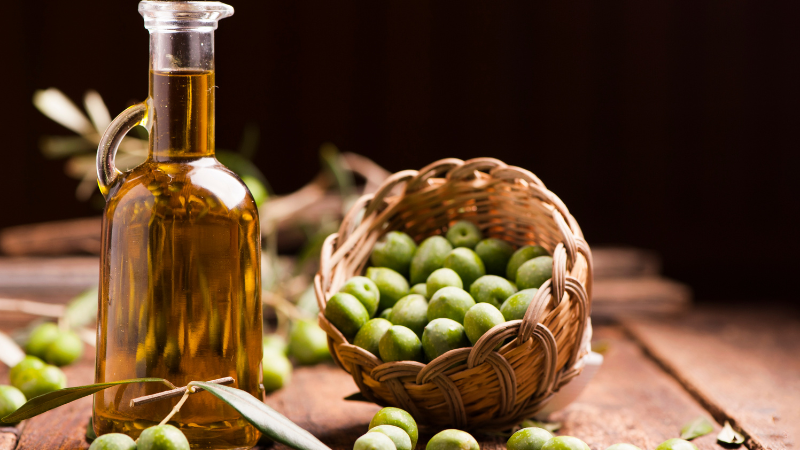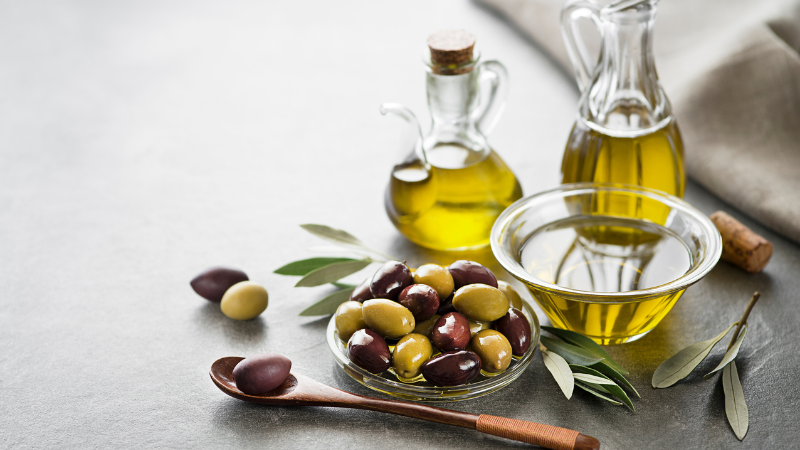How to Store Kalamata Olives and Keep Them Fresh!
If you love them as much as we do, you need to know how to store Kalamata olives to keep them fresh and tasty.
Whether you enjoy sticking them on pizzas, in salads and pasta dishes or simply putting some into a bowl and enjoying them as a handy, healthy snack, there is nothing worse than olives that aren’t fresh anymore.
If you have experienced the smell, texture and taste of olives that have gone bad, we can only sympathise with you.
To avoid that happening again, it’s time to learn more about storing olives and we’re here to help you.
In the following post, we are going to discuss the most important things around what you should and shouldn’t do when storing olives.
Do kalamata olives go bad? (and how to tell)
The short answer is yes, kalamata olives, like all other types of olives can go bad.
There are a couple of almost foolproof ways you can check whether olives are still good to eat or not.
- First, if you have a new, unopened jar or bottle, check the lid. If the lid has popped and is not flat, this is a tell-tale sign that something is not right.
Have you already opened it when you bought it and forgotten?
It may have been already opened when you bought it at the supermarket or shop and you didn’t notice.
Either way, proceed with caution before eating any of the olives. We’d recommend not eating them at all and taking them back for a replacement.
- Use your sense of smell and sight to assess the olives. Are there any visible signs that the olives are bad, such as mould?
Common sense says if you see that any olive has mould on it, whether it’s green olives or Kalamata olives, that you shouldn’t eat it.
BUT, don’t get it confused with the below:
- It could be that some white bits are floating on the surface of the brine in glass jars or canning jars.
This isn’t necessarily a sign that the olives are bad and is sometimes confused with mould. It often isn’t, so this isn’t a foolproof method.
The small layer of white film on top is harmless, (and actually even healthy!) so don’t throw your olives out. This is known as “mother” and is not harmful.
It is, in fact, the healthy lactobacillus probiotic bacteria that occurs as a result of fermentation. There is nothing wrong with your olives and you can safely eat them.
As long as the olives look and smell good, you could spoon out the white floats and eat the olives without any worries.
If it bothers you, you can add a teaspoon of vinegar which helps prevent it from forming again. Some people like to add red wine vinegar to add extra flavour
- Smell the brine
Even if you are not sure what constitutes fresh brine and not-so-fresh brine, your nose and brain will do the hard work for you. It will smell awful if the olives in the brine are off.
It’s not necessarily the brine that is off, rather the solids inside it i.e. our beloved olives!
Brine on its own can actually last years and years.
When olives pass the sight and smell taste, it’s time to try them.
Just take one and bite into it, if it tastes fine, you should have no worries proceeding to eat those little beauties.
Do kalamata olives need to be refrigerated?
No, not necessarily. Kalamata olives do not need to be refrigerated but there are some instances where they should.
When it comes to storage, it is less about the kind of olives you have and more about the kind of liquid they are preserved in, whether it’s oil or brine.
Here are the best ways to store Kalamata olives in each situation
For kalamata olives in brine
You can store them in an unopened bottle or jar in your kitchen, without placing them into the fridge.
You need to make sure they are in a dry and cool place out of direct sunlight, (like the pantry) as the sunlight can cause olives to deteriorate faster.
Once you have opened olives in brine, you need to place the container, whether it’s a bottle or jar into the fridge.
For olives in oil
You need to take a different approach.
The oil itself may not be affected by room temperature and does not need to be placed into the fridge.
However, foods in oil do less well at room temperature, therefore it is best to place a jar or container of olives in oil in the fridge, whether it’s opened or not.
How long do kalamata olives last in the fridge?
Again, this has more to do with the preservative used to store the olives than it does the type of olives or anything else. When Kalamata olives are made and processed, they will be packaged in different ways.
With olives packaged in brine, there will usually be a best before date. As you may already know, olives, like other packaged foods do not suddenly change or go bad once they have passed that date.
If the container is unopened, in good condition and has been looked after properly, there is no reason why the olives won’t still be edible even past the best before date.
You just need to refer to the tips and suggestions above to make sure they are not spoiled before eating them.
The interesting thing and potential minefield are when the container has been opened as there are lots of different recommendations from different places and sources about how long olives can last.
With kalamata olives in oil, the rules about storing them are less convoluted as there are fewer variables, making them easier to follow.
Olives stored in oil also have their own best before date.
The great thing with olives in oil is that whether the container is opened or not does not have a huge impact on the condition or quality of the olives.
It is reasonable to assume that the olives in oil will stay good to eat at least until the best before date and then a couple of weeks after that too if they’ve been stored according to guidelines.
If you have any doubts you should refer to our guide above about testing whether olives are good or bad.
What liquid do you store olives in?
There are many different liquids you can store olives in. However, the two most common ways to store olives of any kind is brine and oil.
Brine may sound intimidating, but it’s just a mixture of salt and water.
- The easiest brine to make is one that is made up of ½ teaspoon of salt for every cup of water. Sea salt can also be used
- You need to make sure the olives are completely submerged and covered by the brine.
- Any that are not covered in brine are likely to go bad quicker.
If you have bought olives in brine, there will be some indication of how long they will last, as we have already noted in this post.
However, if you make up your brine using the recipe above, you need to be aware that it’s not an especially strong brine, so you should only store olives in it for just a couple of weeks.
Although you can generally store olives in any oil, it makes the most sense to store them in olive oil – why not try pairing our olives with our award-winning Kalamata Olive Oil?
Summary
There are a variety of different ways and methods you can store and cure olives. Follow the guidelines above for storage and your Kalamata olives will stay fresh and retain their amazing taste.
Alcoholic drinks like Martini (or another Vermouth), which are normally associated with olives, are another great idea.



